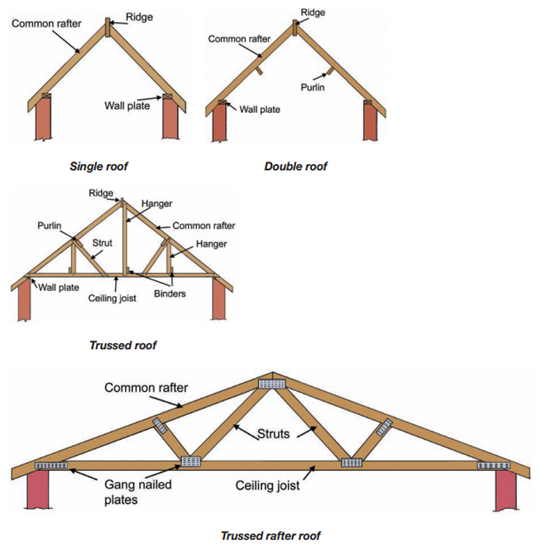A residential roof can be categorized into three different basic structures:
- Single roof
- Double roof
- Trussed roof
In more modern residences, you’ll likely find a variation on the third category of roof structure known as a trussed rafter roof.
In layman’s terms…
A single roof has rafters that don’t require intermediate support. As a result, a basic single roof is limited and can only be used for small areas. A single roof may include the following subcategories:
- Couple Roof: Used in buildings with a clear span of less than 3 m and a pitch less than 40°.
- Collar Roof: Used in buildings with a clear span less than 4 mm.
- Close Couple Roof: Used in buildings with a clear span less than 5.5 mm and a pitch less than 25°.
In contrast, a double roof is built with rafters that require intermediate support, normally in the form of a beam, or purlin, placed under rafters at the halfway point between the wallplate and bridge.
Double roofs come in a number of styles and designs. The basic construction of a double roof will depend directly on the shape and area of a building’s ground floor.
Modern double roofs may be constructed completely of lightweight roof trusses, also known as trussed rafters.
Find out more about residential roofing services here or take a look at our previous roofing projects.





